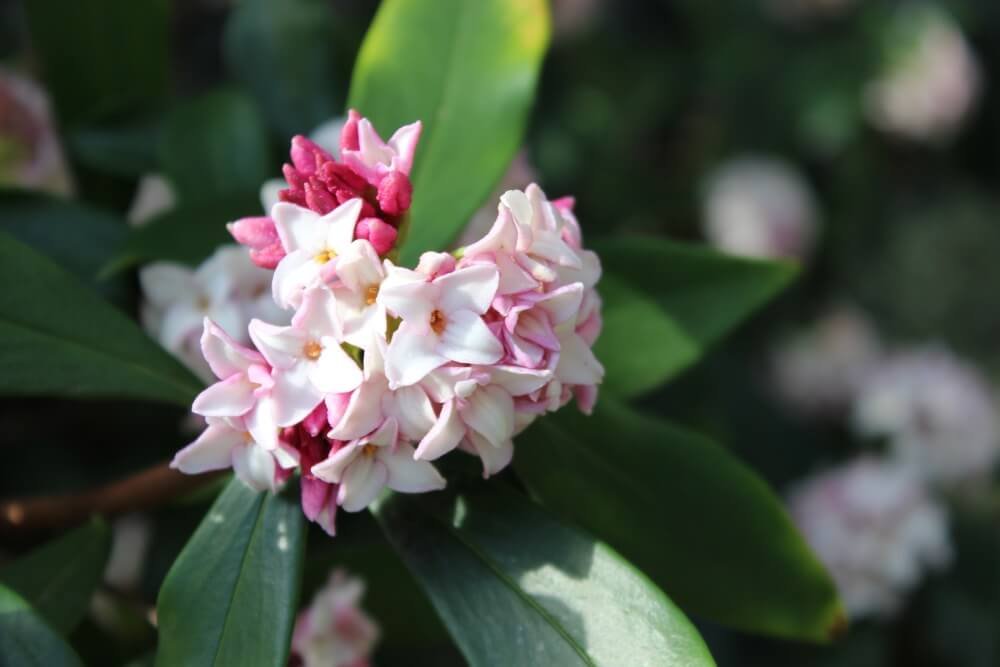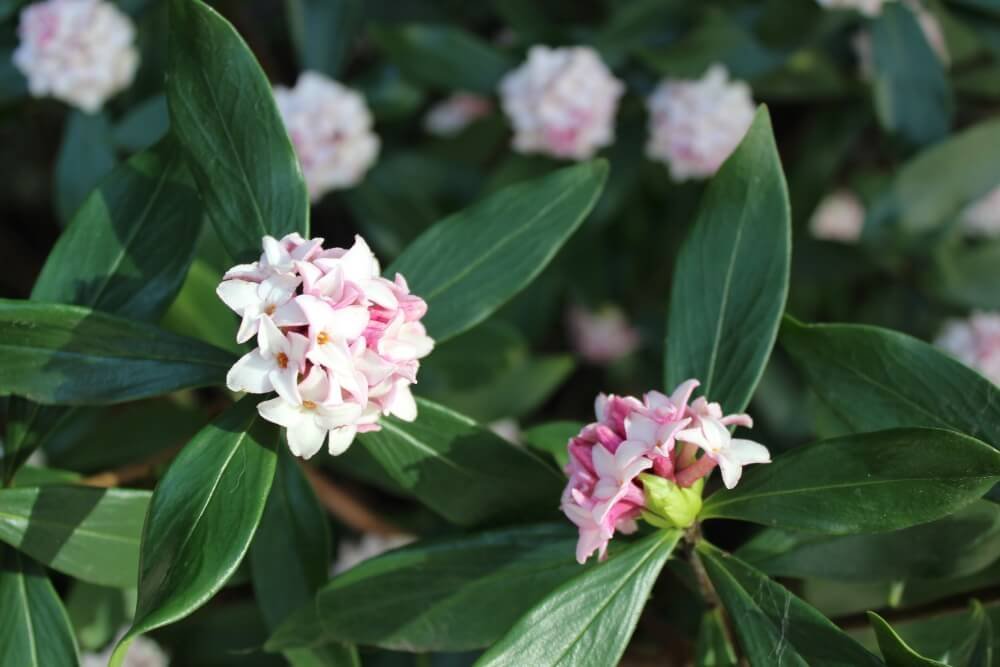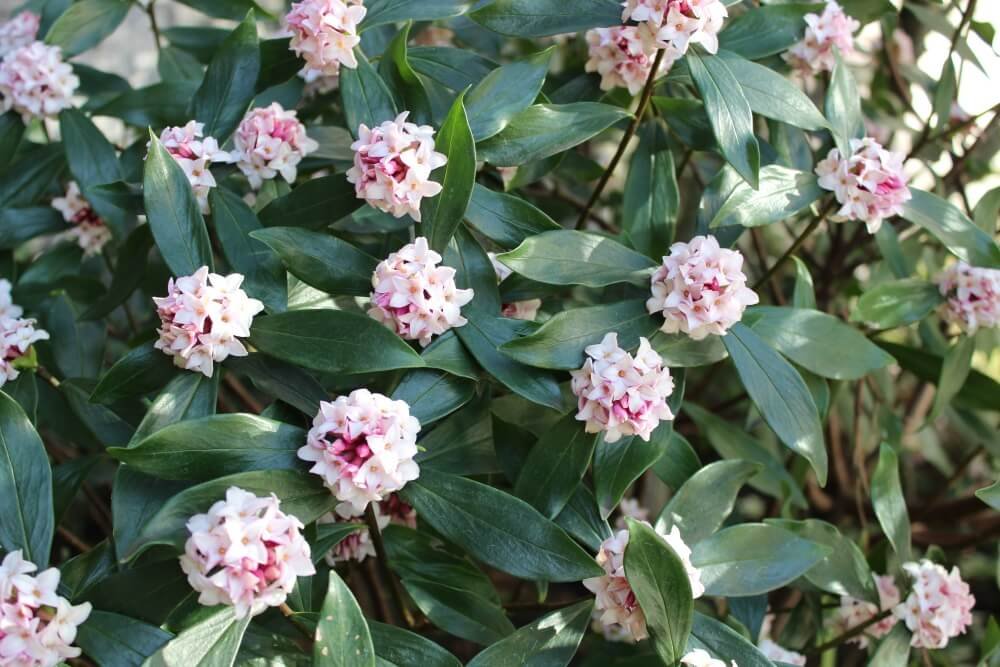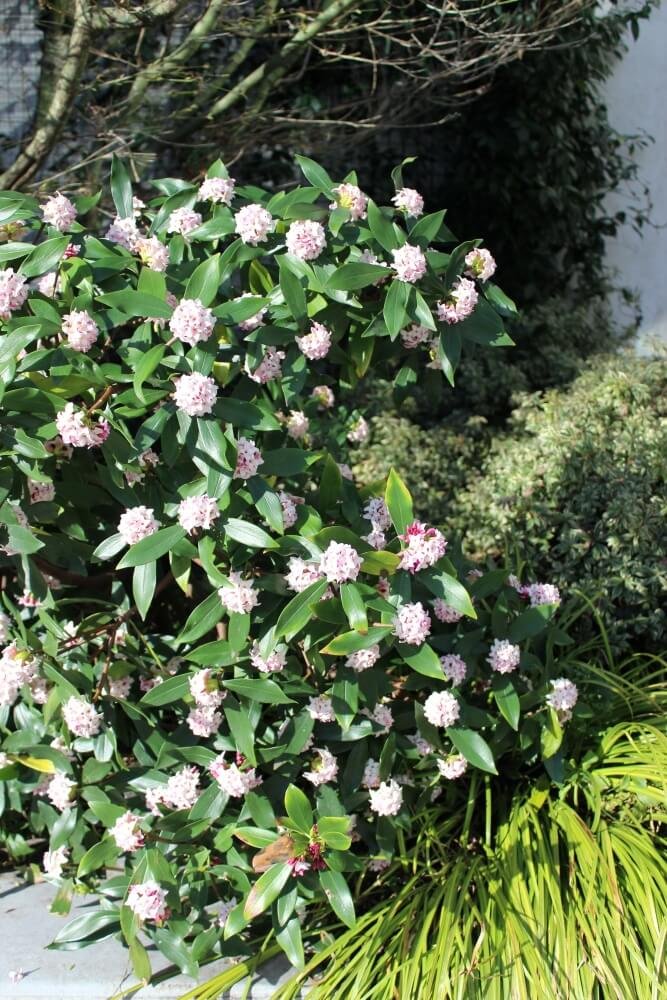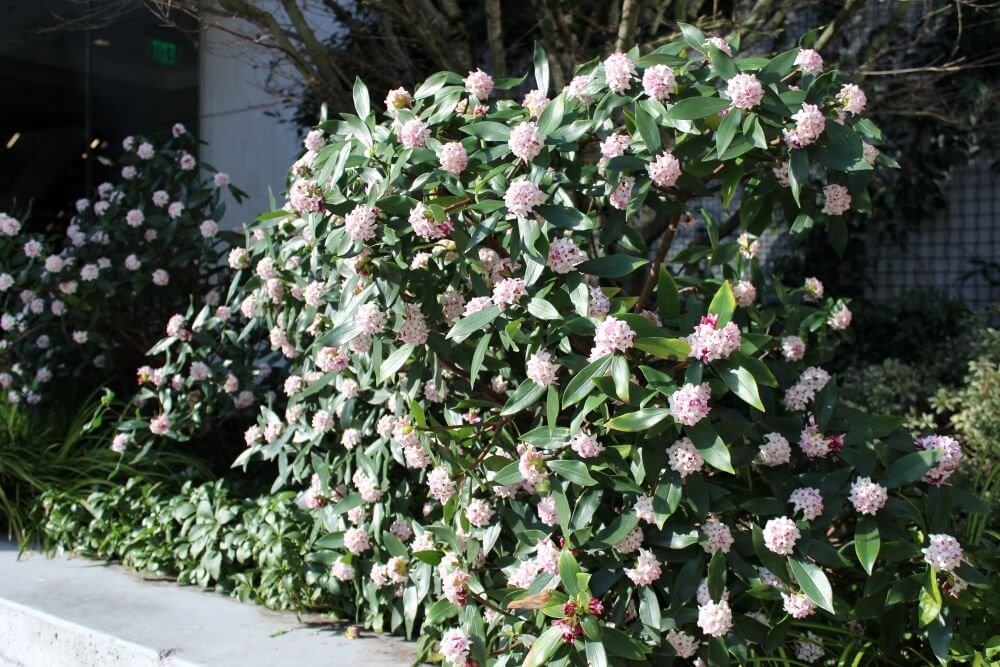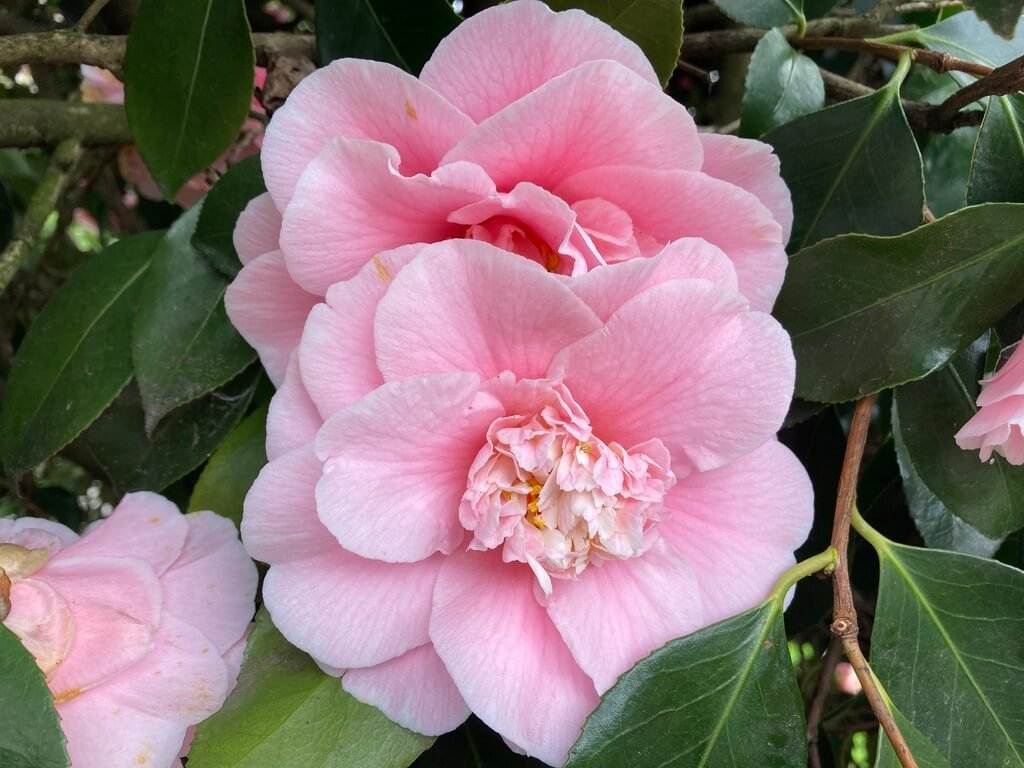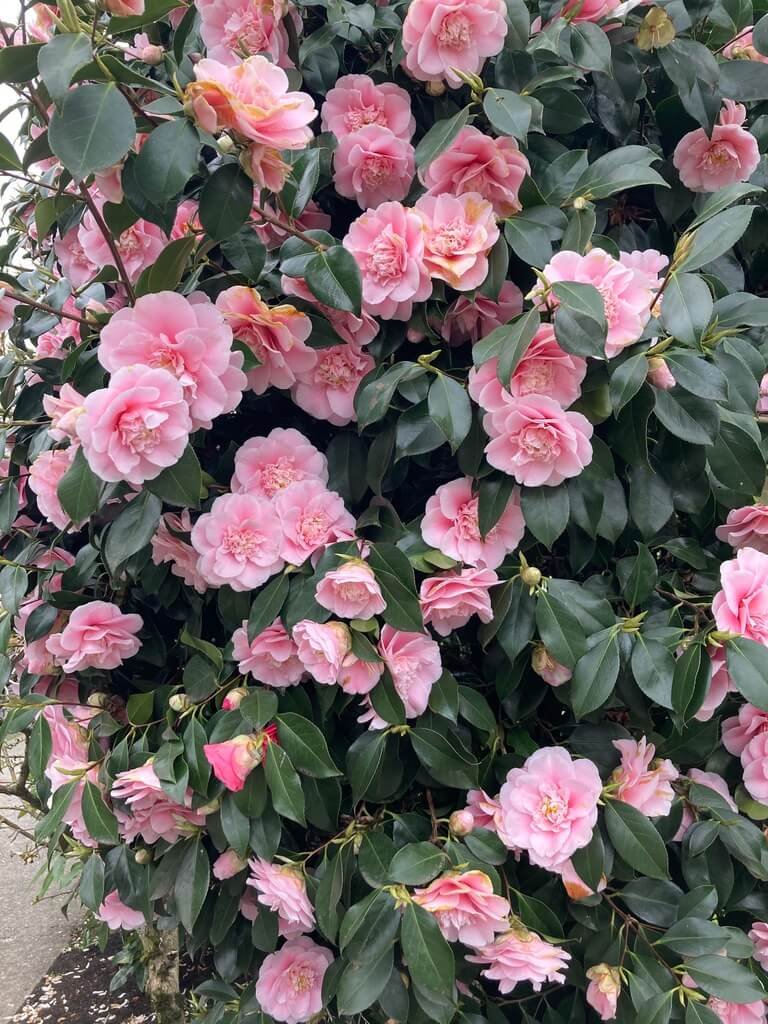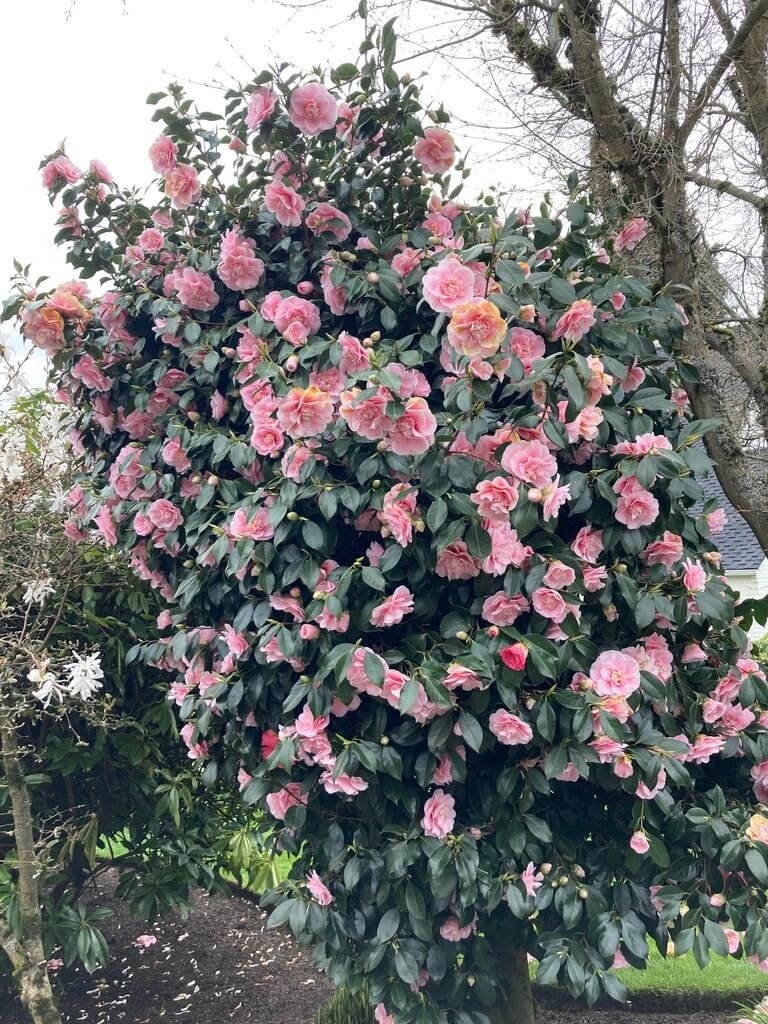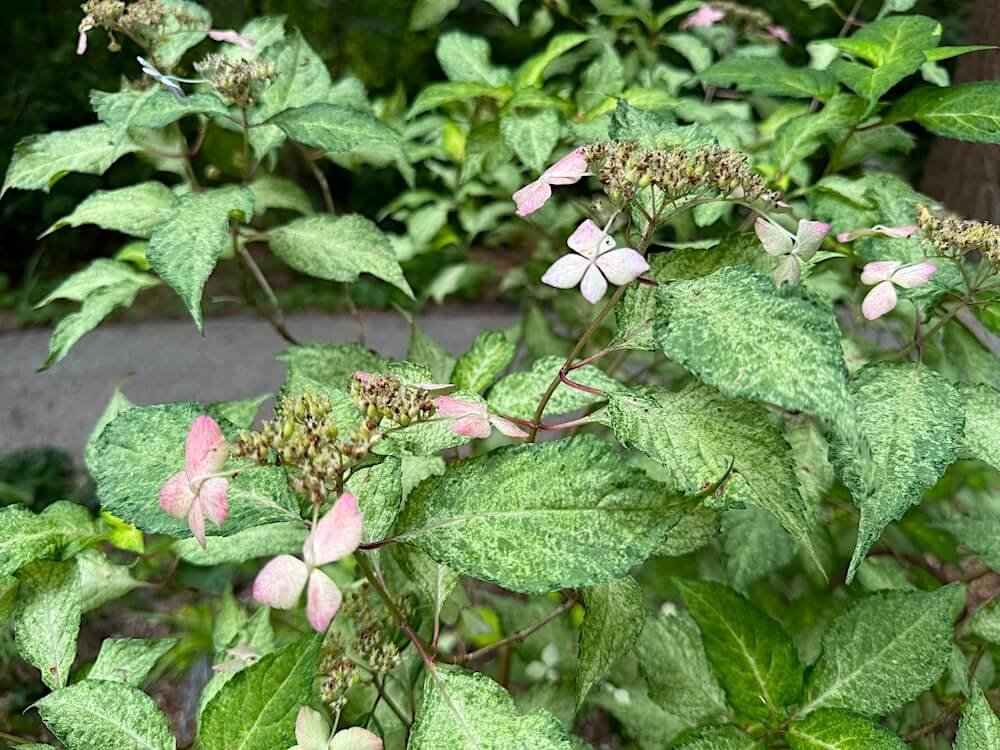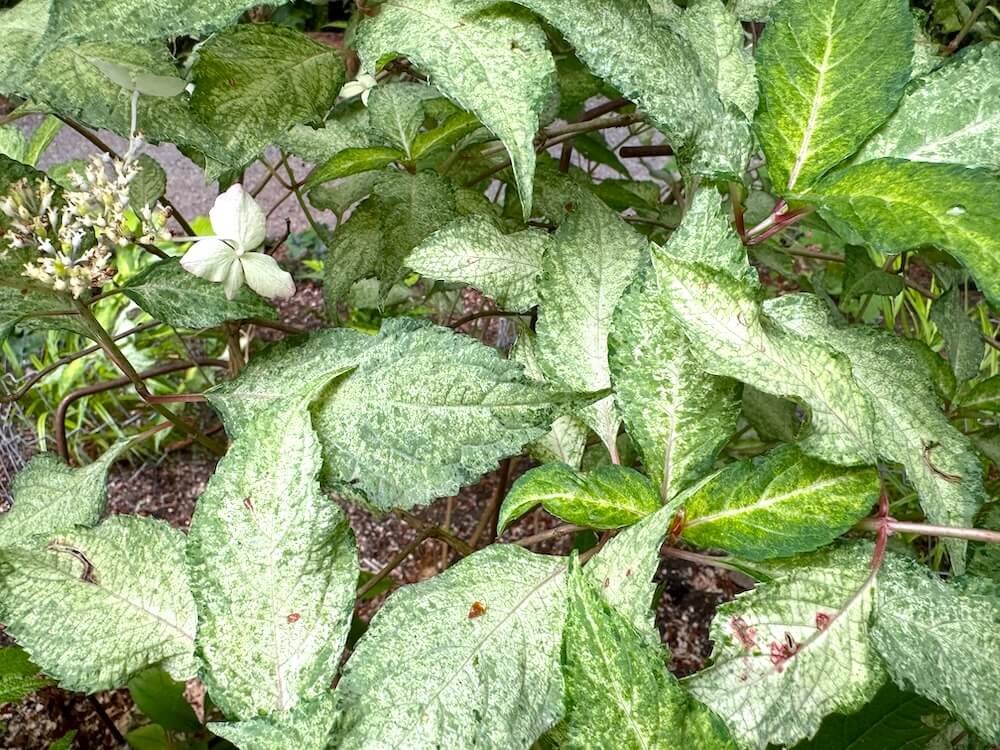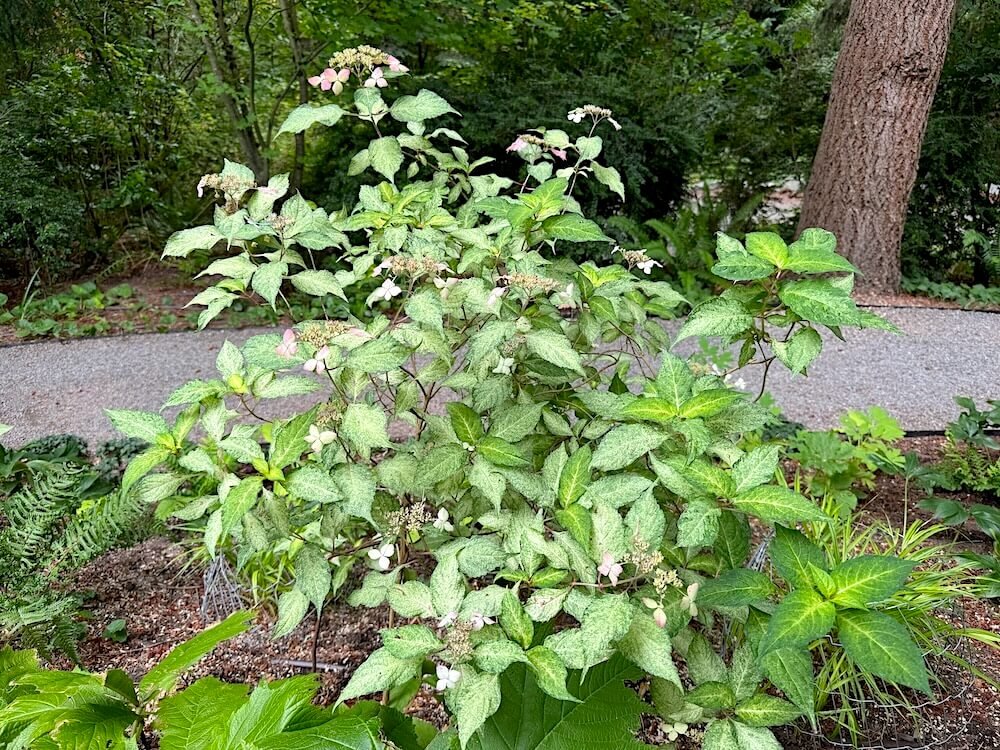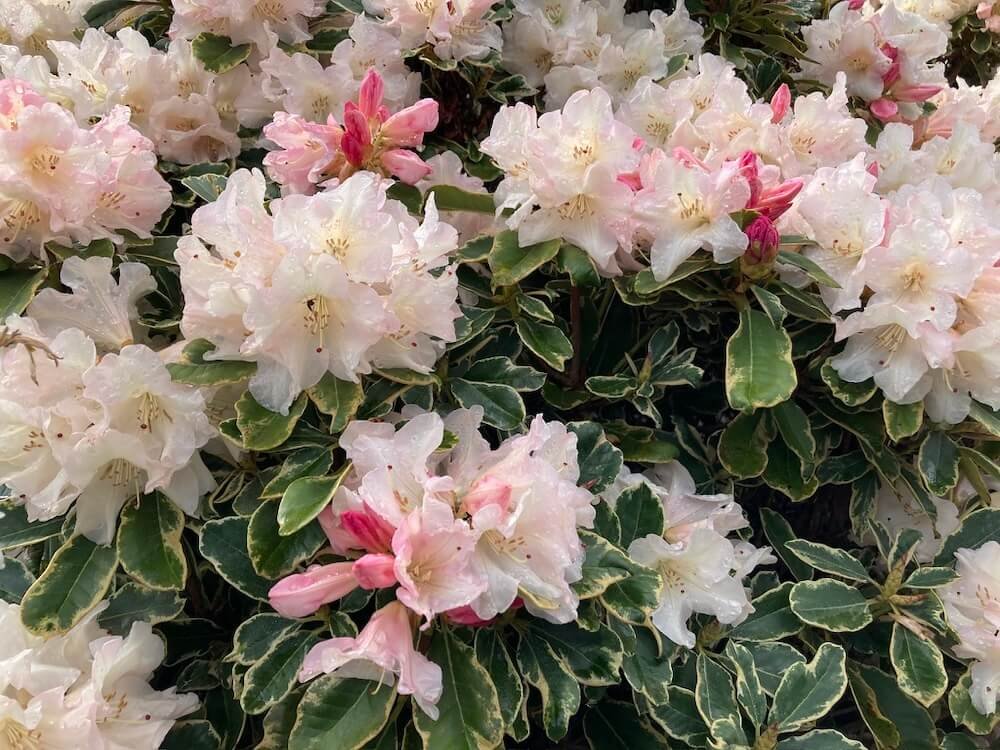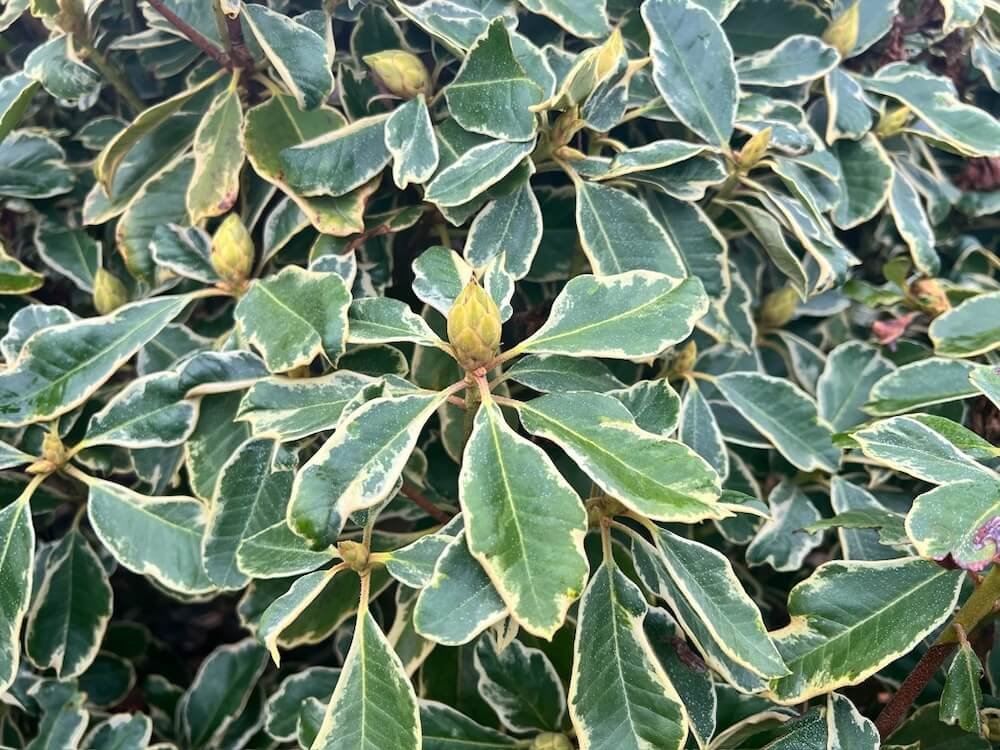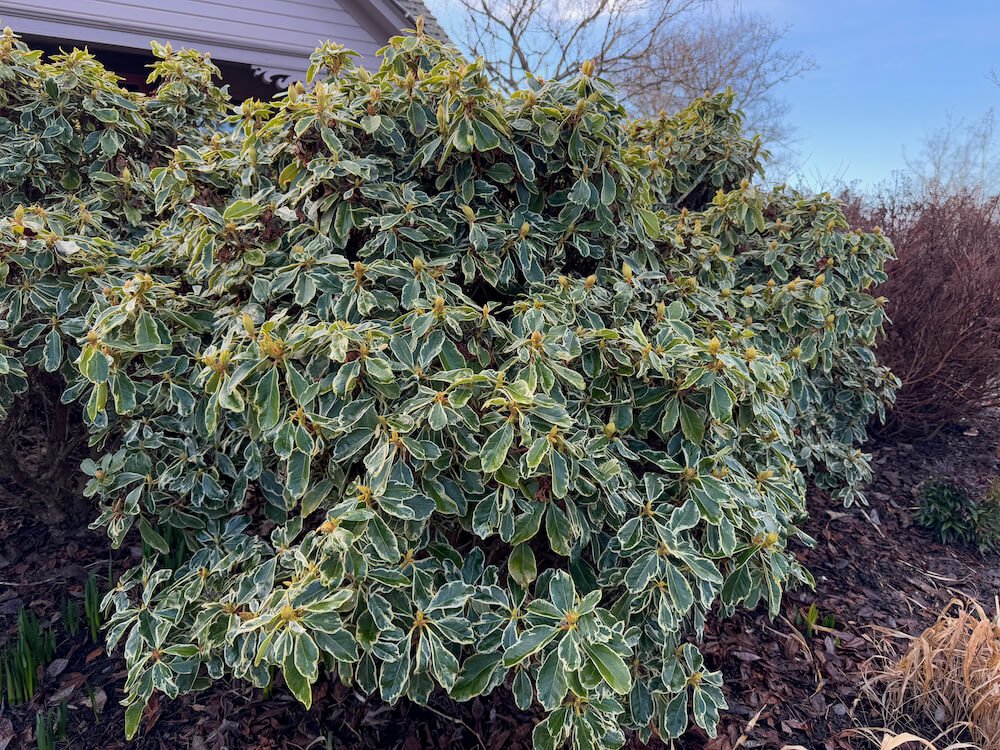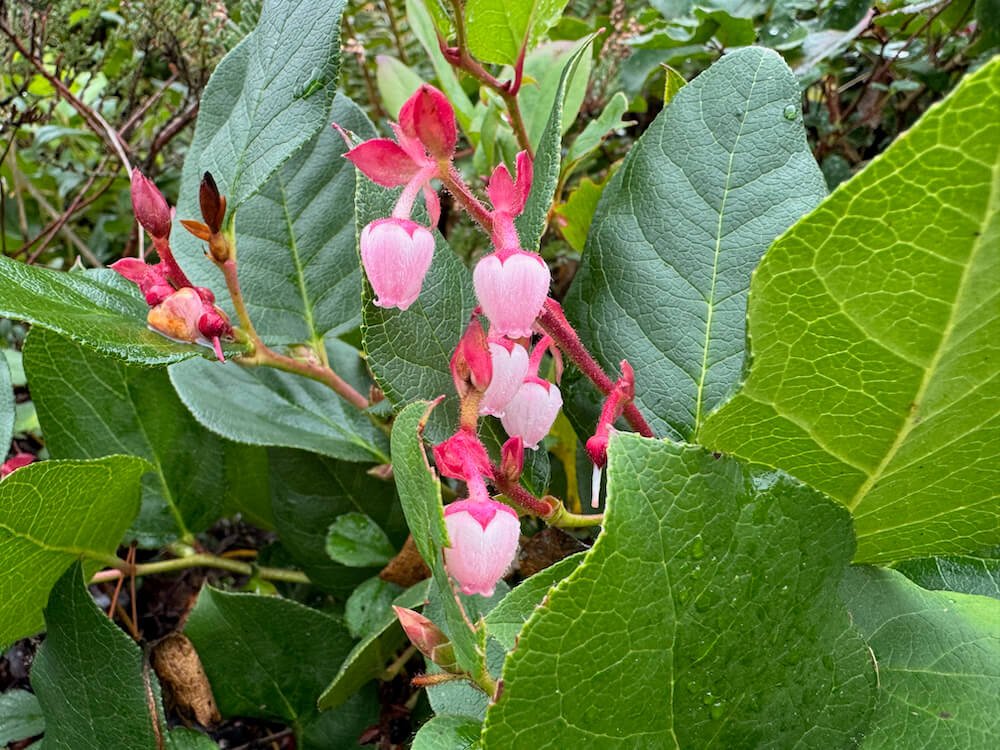 Image 1 of 5
Image 1 of 5

 Image 2 of 5
Image 2 of 5

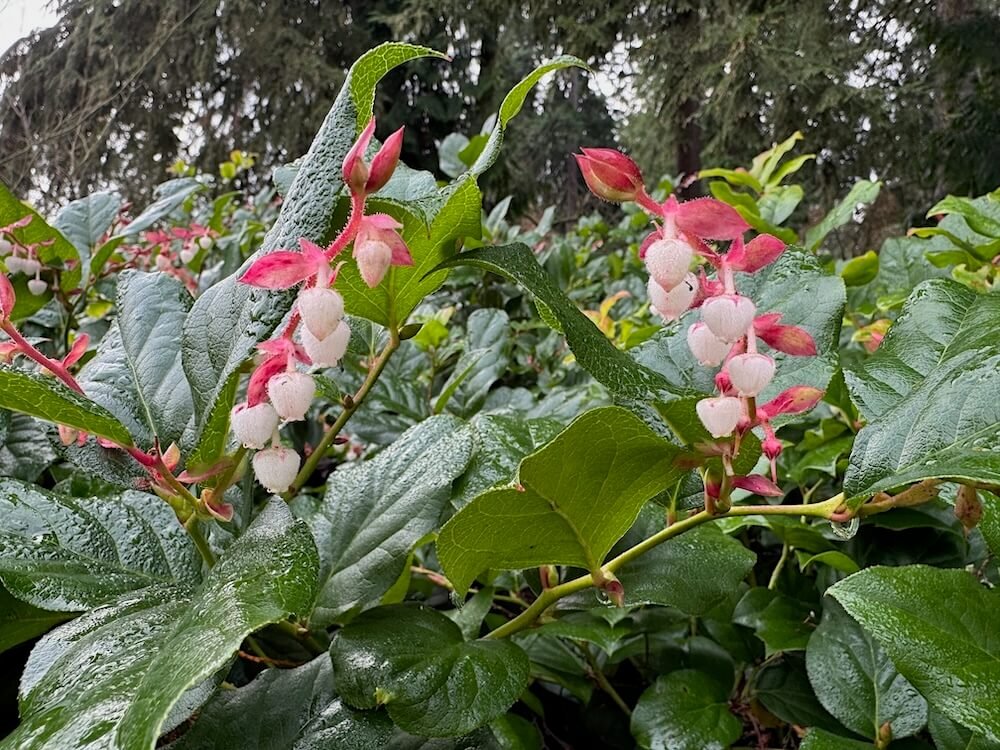 Image 3 of 5
Image 3 of 5

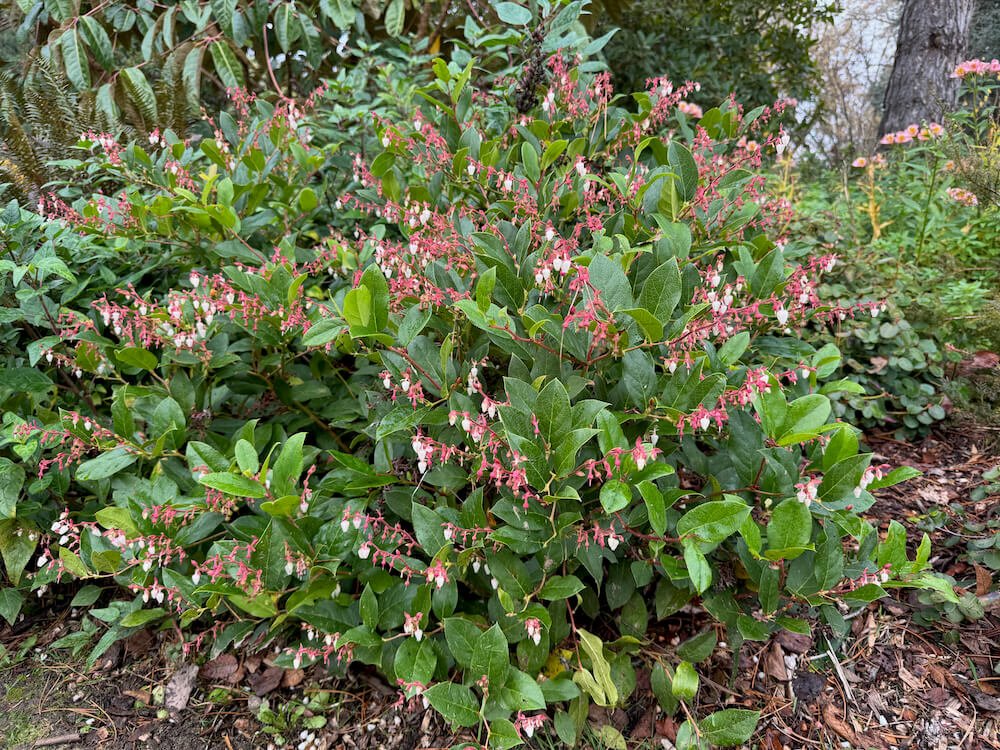 Image 4 of 5
Image 4 of 5

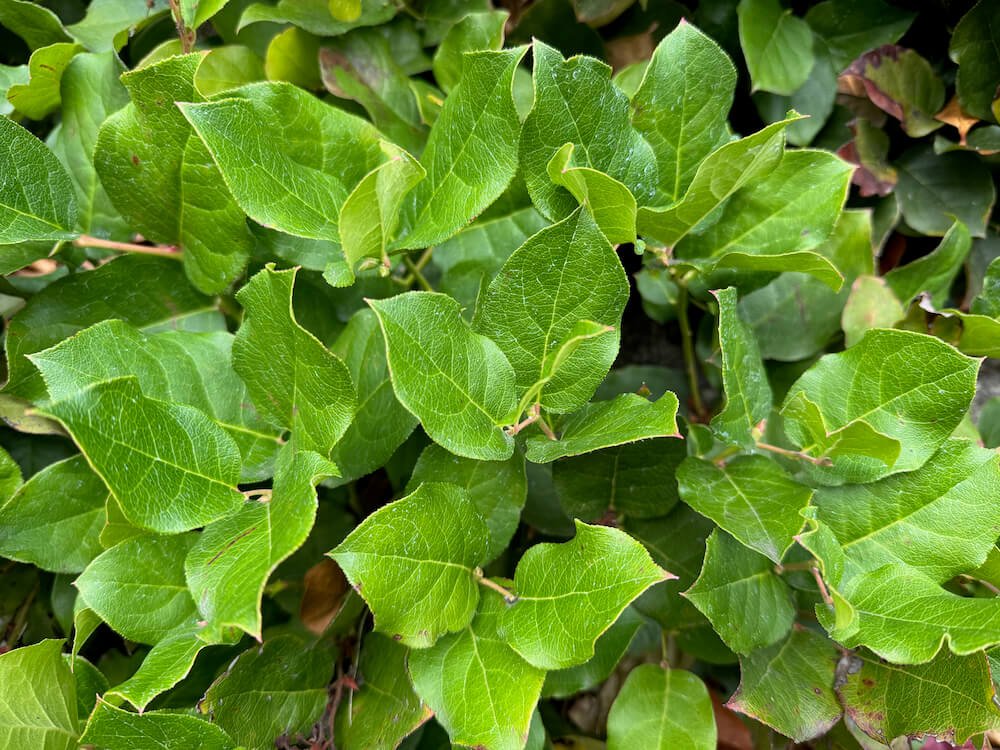 Image 5 of 5
Image 5 of 5






Gaultheria shallon | Salal
DESCRIPTION
Gaultheria shallon is a versatile evergreen shrub native to the Pacific Northwest. It is known for its glossy, leathery, dark green leaves that add year-round interest. During late spring to early summer, the plant produces clusters of delicate, bell-shaped flowers that range from white to light pink, offering a subtle charm to shaded garden areas. These blooms give way to edible berries that mature to a deep purple by late summer and fall, providing both visual appeal and a food source for wildlife.
Salal thrives in shaded or partially shaded areas, making it an excellent ground cover for woodland gardens or erosion control on slopes. Its adaptability to various soil types and tolerance for less-than-ideal growing conditions contribute to its popularity in landscaping. The plant’s berries are historically significant, having been a food source for Indigenous peoples of its native range, and they remain a favorite among foraging enthusiasts today.
DESCRIPTION
Gaultheria shallon is a versatile evergreen shrub native to the Pacific Northwest. It is known for its glossy, leathery, dark green leaves that add year-round interest. During late spring to early summer, the plant produces clusters of delicate, bell-shaped flowers that range from white to light pink, offering a subtle charm to shaded garden areas. These blooms give way to edible berries that mature to a deep purple by late summer and fall, providing both visual appeal and a food source for wildlife.
Salal thrives in shaded or partially shaded areas, making it an excellent ground cover for woodland gardens or erosion control on slopes. Its adaptability to various soil types and tolerance for less-than-ideal growing conditions contribute to its popularity in landscaping. The plant’s berries are historically significant, having been a food source for Indigenous peoples of its native range, and they remain a favorite among foraging enthusiasts today.
DESCRIPTION
Gaultheria shallon is a versatile evergreen shrub native to the Pacific Northwest. It is known for its glossy, leathery, dark green leaves that add year-round interest. During late spring to early summer, the plant produces clusters of delicate, bell-shaped flowers that range from white to light pink, offering a subtle charm to shaded garden areas. These blooms give way to edible berries that mature to a deep purple by late summer and fall, providing both visual appeal and a food source for wildlife.
Salal thrives in shaded or partially shaded areas, making it an excellent ground cover for woodland gardens or erosion control on slopes. Its adaptability to various soil types and tolerance for less-than-ideal growing conditions contribute to its popularity in landscaping. The plant’s berries are historically significant, having been a food source for Indigenous peoples of its native range, and they remain a favorite among foraging enthusiasts today.
-
Family: Ericaceae
Height: 2 to 5 feet
Width: 3 to 8 feet
Foliage color: Dark glossy green, leathery texture
Flower color: White to pink, urn-shaped
Bloom time: Spring (March to June)
Light requirements: Partial shade to full shade
Water requirements: Dry to moist soil
Maintenance: Low; forms dense thickets
Growing zone: USDA zones 6 to 8
Wildlife attractors: Attracts hummingbirds, bees, butterflies, and various birds; berries provide food for birds, squirrels, chipmunks, foxes, coyotes, and bears

